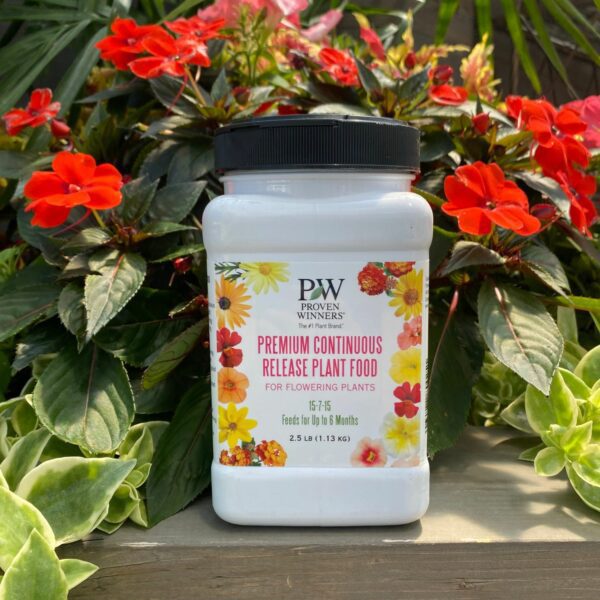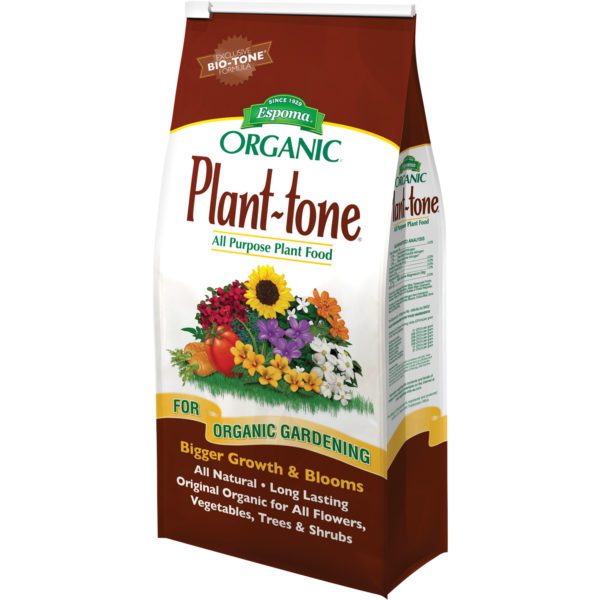Sandy soil can be more of a blessing than a curse – IF you know how to deal with it. In this article, you’ll see the advantages of gardening in sand, plus find tips for watering, fertilizing, amending the soil, and choosing plants that will thrive in your sandy soil.
Though I grew up in a garden with heavy, alkaline clay soil that was probably better suited to making pottery than growing plants, most of my adult life has been spent gardening in sand. Know the kind of sugar fine sand you find on a beach? That is my native “soil”, if you could call it that. I marvel at the enormous oak and beech trees that thrive in it and often wonder how they manage to find the water and nutrients they need. Having gardened in sandy soil for over 20 years, I’ve learned a thing or two.
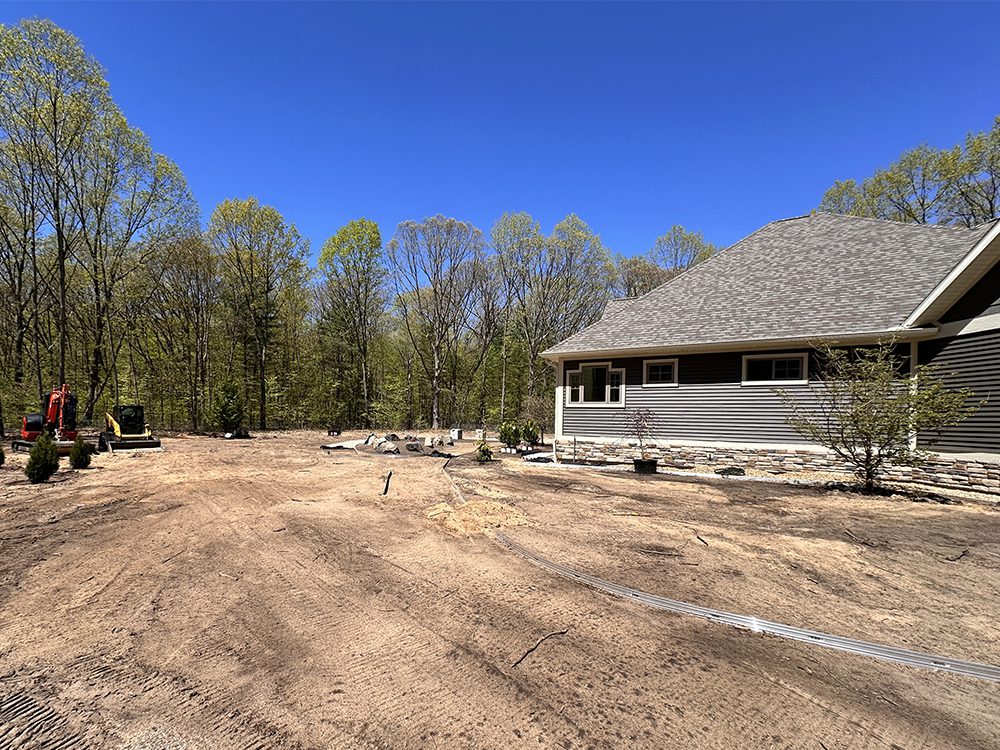
Constructing a new garden on sandy soil has its advantages and disadvantages. Photo courtesy of Susan Martin.
Advantages of Sandy Soil
Sandy soil gets a bad rap as being difficult to garden with, but my flourishing garden which contains hundreds of different kinds of plants is living proof of the opposite. Sandy soil is:
- Easier to dig in
- Harder to get compacted
- Easier to amend
- Well-drained, which many plants prefer
- Less prone to giving plants root rot and other problems that arise from overwatering
- Faster to warm up in spring and slower to freeze in winter, extending the growing time for your plants
Disadvantages of Sandy Soil
Of course, it’s not all fun and games to garden in sandy soil. You can probably guess that it dries out much faster and doesn’t retain moisture for long. It also holds very few nutrients (sometimes referred to as “poor soil”), unlike clay soil which is naturally rich in minerals.
Let me share some common sense tips for gardening in sandy soil that have helped me over the years to grow a beautiful garden. Follow my advice and your landscaping will look amazing, too!
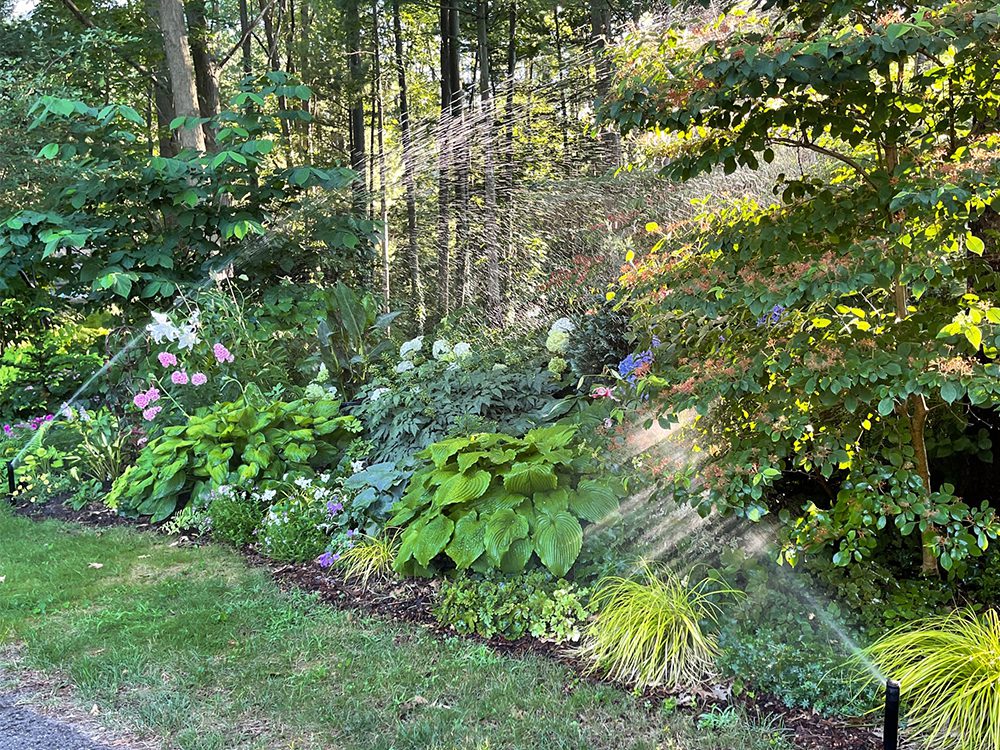
Irrigation is critically important in gardens with sandy soil. Photo courtesy of Susan Martin.
How to Water a Garden with Sandy Soil
All plants need water to grow, though some need more than others. I’ll share my recommended list of top plants for sandy soils at the end of this article, many of which are drought tolerant. However, as new plantings are getting their roots established in your sandy soil, they will all need to be watered regularly, regardless of their level of drought tolerance.
In sandy soils in particular, aim to water established plants less frequently but for longer each time so the moisture seeps deeper into the ground. Doing so will encourage your plants’ roots to plunge further down into the soil where more moisture is available, and the soil is cooler.
When you irrigate a garden with sandy soil, the water will not move laterally – it drains straight down. Remember that when setting up your sprinklers or when hand-watering. It’s important to get the water right on the plants that need it, preferably at root level. If the sprinkler stops a few feet away from what you are trying to water, it won’t help. Water early in the morning so the soil stays moist for longer but the foliage dries before nightfall. Avoid watering in the evening.
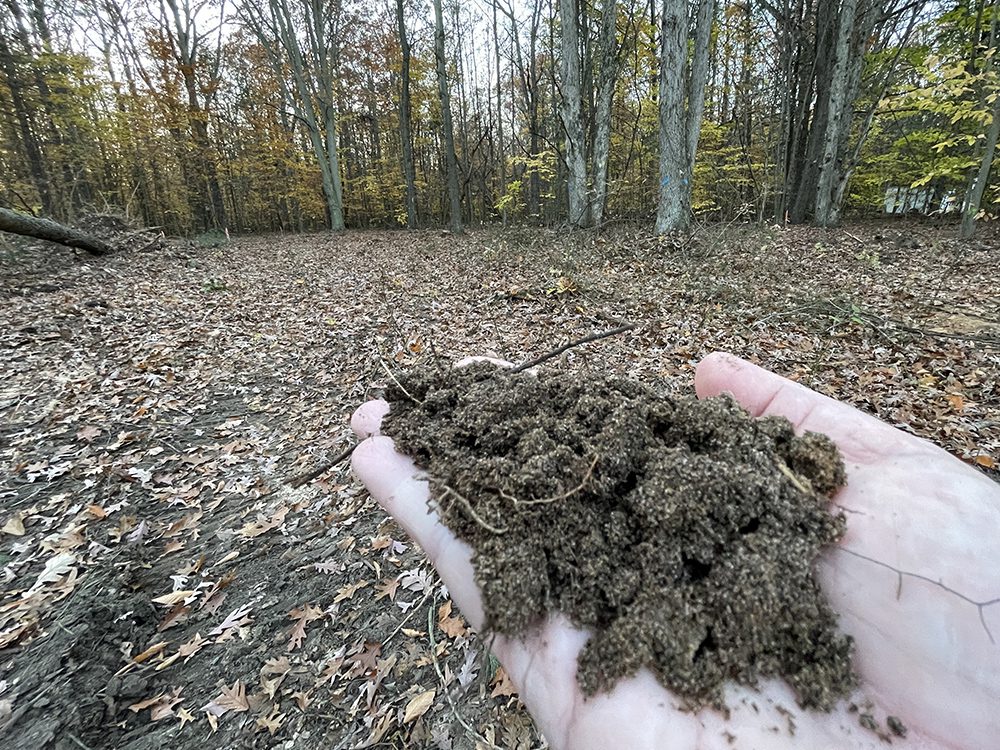
Sandy loam soil is ideal for growing many kinds of perennials, trees and shrubs. Photo courtesy of Susan Martin.
How to Amend Sandy Soil
Sandy loam soil is ideal for most types of plants, so make it a goal to transform your sandy soil into sandy loam over time. This is a process that will take years, but you will see improvements as you go and I promise it will be worth your effort. After following the advice I’m going to give you next, I was able to transform my beach sand soil into rich, sandy loam in about a decade. Your soil’s transformation may go even quicker.
In addition to watering, amending your sandy soil with organic matter is the most important thing you can do to help your plants flourish. Organic matter can come in a variety of forms. Some good ones include shredded leaves, compost, peat moss, manure, earthworm castings, soil conditioner, finely shredded bark, straw and pine needles.
In the fall, when everyone else on your block is bagging their leaves and sending them to the curb, shred your leaves instead and lay them back into your garden beds in a 3-4” thick layer as a winter mulch. By spring, they will be mostly decomposed. The remainder can be raked into your soil or covered up with bark mulch. This free resource is the one I take advantage of the most in my own garden. As a result, my sandy soil is much richer and contains earthworms that are further enriching it – all free of charge!
DON’T do this! Don’t be tempted to spread a thick layer of “good” soil on top of your sandy soil to plant in or fill your planting hole with it. This will cause multiple problems and do more harm than good. Instead, amend your sandy soil by mixing or tilling it with one-third organic matter and use that for planting.
Slow-release and continuous-release fertilizers are more effective in sandy soils.
How to Fertilize Plants in Sandy Soil
Since sandy soil is unable to hold onto nutrients for long, feeding only with water-soluble fertilizer is less effective in the long term. It can be used weekly to fertilize annuals, but should be combined with your use of organic matter like compost or manure and slow-release or continuous-release fertilizer. The larger particles in organic matter and these types of granular fertilizer linger longer in sandy soil, giving the plants more time to benefit from them.
When planting new trees, shrubs and perennials, organic Bio-tone® from Espoma is very helpful for sandy soil. The microbes and Mycorrhizae it contains bind to the plants’ roots and help them acclimate more easily into their new surroundings. This product reduces transplant shock, encourages the plants to develop deeper roots, and ultimately helps to bulk new plants up more quickly.
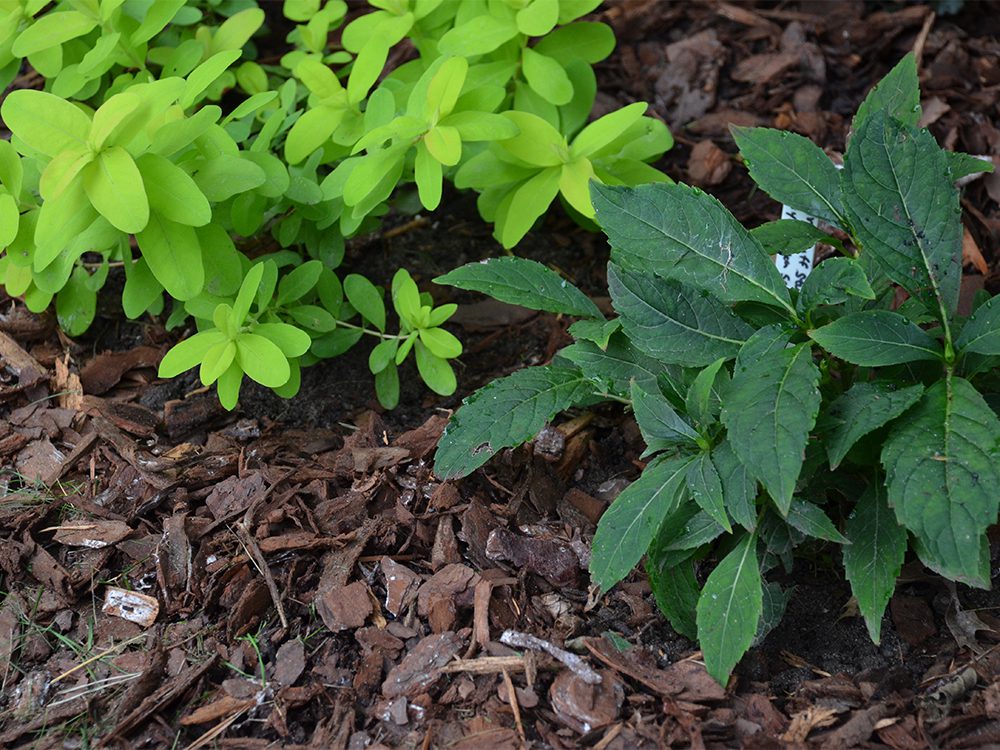
Covering your sandy soil with mulch helps to keep the soil cooler and more moist. Photo courtesy of Susan Martin.
Cover Your Sandy Soil
Have you ever walked on a sandy beach on a summer day and felt its scorching heat under foot? Ever been to the beach on a windy day and had sand blow into your hair? Unlike clay soil, sand gets hot and erodes quickly. Neither trait is helpful for your landscape. Do your best to make sure your sandy soil is covered with bark or rock mulch, a cover crop, turf grass or ornamental plants. They will help to keep the soil cooler and limit erosion.
In my garden, I prefer to space my plants close together and use bark mulch or shredded hardwood in between. Spacing plants tightly helps them support one another, leaves less room for weeds to grow, and cuts down on the amount of mulch I need. When planting something new, I simply dig through the mulch and mix it into the soil used to backfill the hole. The mulch breaks down in the soil over time, further enriching it.
Best Plants for Sandy Soil
Even if you follow all of the tips above, you will still have sandy soil in the end. However, it will be far more amendable to growing a broader array of plants than if you hadn’t. Some plants actually prefer to grow in sandy soil because it is so well-drained and isn’t too rich in nutrients.
Here are my top recommended perennials and shrubs for growing in sandy soil. Tap a name below to learn more about the plant.
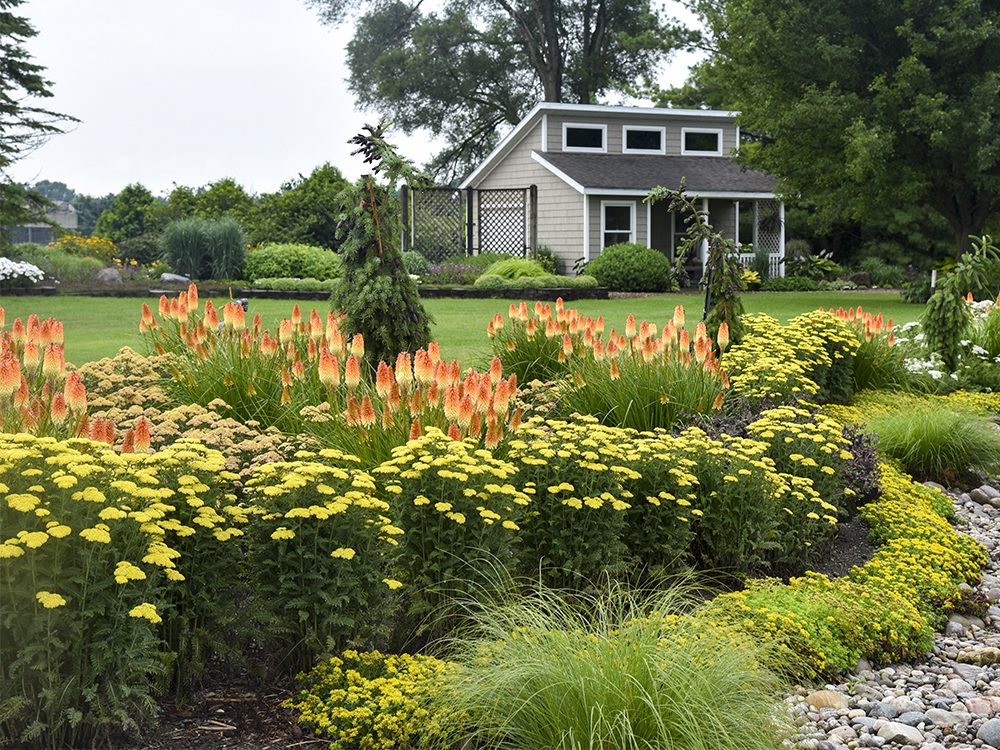
Many drought tolerant perennials like yarrow, red hot poker and sedum enjoy the well-drained properties of sandy soil. Photo courtesy of Walters Gardens, Inc.
Best Perennials for Sandy Soil
- Yarrow (Achillea)
- Anise hyssop (Agastache)
- Thrift (Armeria)
- Artemisia
- Butterfly weed (Asclepias tuberosa)
- False indigo (Baptisia)
- Carpathian bellflower (Campanula carpatica)
- Tickseed (Coreopsis)
- Hardy ice plant (Delosperma)
- Pinks (Dianthus)
- Fern-leaved bleeding heart (Dicentra – alpine forms)
- Coneflower (Echinacea)
- Globe thistle (Echinops)
- Sea holly (Eryngium)
- Spurge (Euphorbia)
- Blanket flower (Gaillardia)
- Butterfly flower (Gaura)
- Baby’s breath (Gypsophila)
- Red hot poker (Kniphofia)
- Lavender (Lavandula)
- Catmint (Nepeta)
- Switch grass (Panicum)
- Penstemon
- Russian sage (Perovskia)
- Creeping phlox
- Perennial salvia
- Stonecrop (Sedum)
- Hen & chicks (Sempervivum)
- Stoke’s aster (Stokesia)
- Yucca
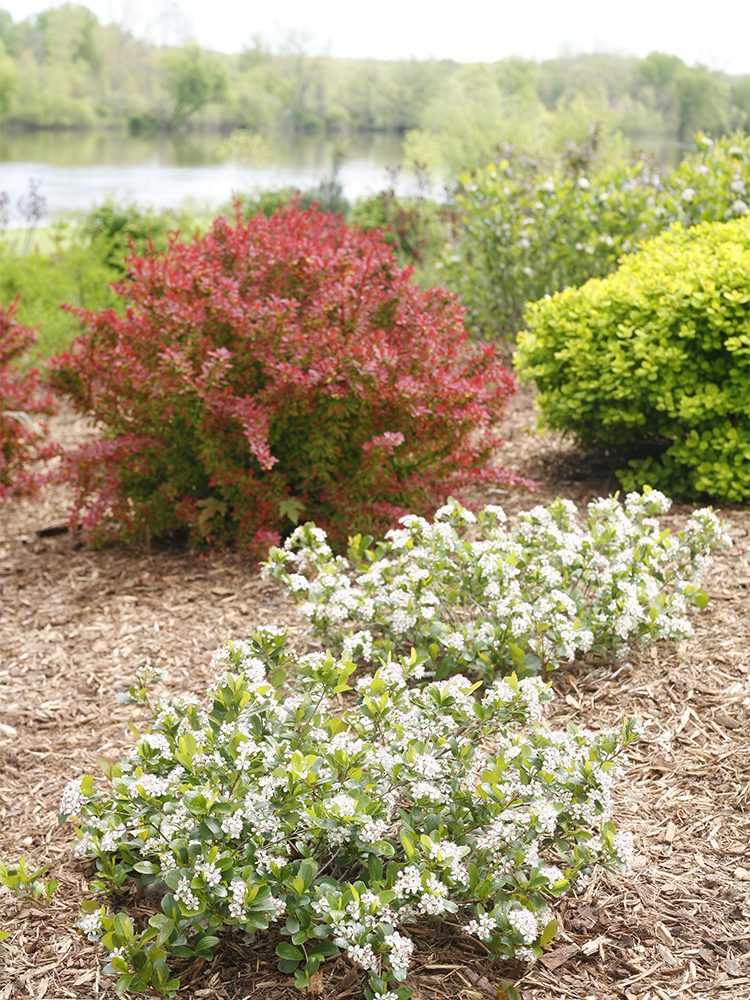
Aronia and barberry are both drought tolerant shrubs that thrive in sandy soil. Photo courtesy of Proven Winners® ColorChoice Shrubs®.
Best Shrubs for Sandy Soil
- Chokeberry (Aronia)
- Barberry (Berberis)
- Crossvine (Bignonia)
- Firecracker bush (Bouvardia)
- Butterfly bush (Buddleia)
- Bluebeard (Caryopteris)
- Jessamine (Cestrum)
- Quince (Chaenomeles)
- Desert orchid (Chitalpa)
- Smokebush (Continus)
- Broom (Cytisus)
- Diervilla
- Thornless silverthorn (Elaeagnus)
- Rose of Sharon (Hibiscus syriacus)
- Juniper (Juniperus)
- Oleander (Nerium)
- Mock orange (Philadelphus)
- Ninebark (Physocarpus)
- Potentilla
- Indian hawthorn (Rhaphiolepis)
- Lilac (Syringa)
- Trumpet bush (Tecoma)
- Chastetree (Vitex)

